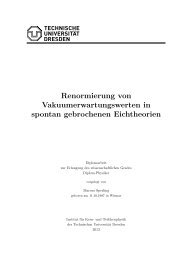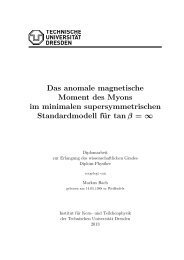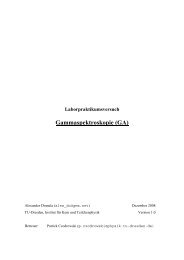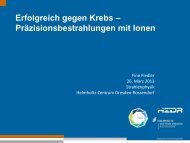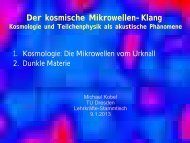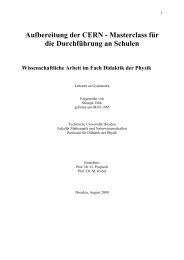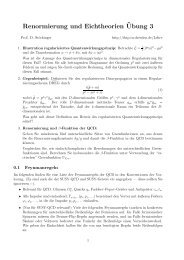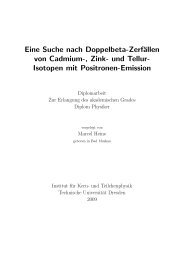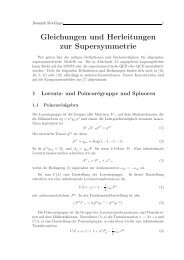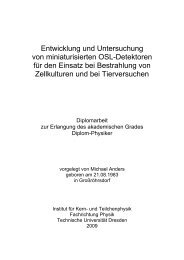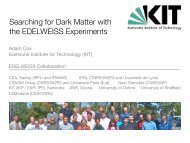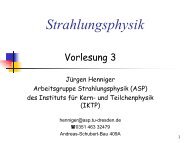A Mathematica based Version of the CKMfitter Package
A Mathematica based Version of the CKMfitter Package
A Mathematica based Version of the CKMfitter Package
Create successful ePaper yourself
Turn your PDF publications into a flip-book with our unique Google optimized e-Paper software.
44 Chapter 5. Probing <strong>the</strong> Standard Model<br />
In addition to <strong>the</strong> Standard Global CKM Fit, several fits for different classes <strong>of</strong><br />
constraints have been performed in this <strong>the</strong>sis. Each plot <strong>of</strong> Figure 5.8 shows <strong>the</strong><br />
95 % CL belts for <strong>the</strong> individual constraints and <strong>the</strong> allowed area from <strong>the</strong> combined<br />
fits.<br />
In <strong>the</strong> first row, <strong>the</strong> fit results, obtained from <strong>the</strong> CP-violating observables α, sin 2β,<br />
γ and |ɛK| are compared with those obtained from <strong>the</strong> CP-conserving constraints<br />
|Vub|, ∆md and ∆md & ∆ms. An important observation is that a non-real CKM<br />
matrix with ¯η �= 0 and thus CP violation is also obtained from CP-conserving constraints.<br />
The crucial input in this constraint is <strong>the</strong> recent measurement <strong>of</strong> ∆ms by<br />
CDF, presented at <strong>the</strong> winter conferences 2006.<br />
The second row shows <strong>the</strong> impact <strong>of</strong> <strong>the</strong>oretical uncertainties. The allowed area from<br />
<strong>the</strong> fit using only <strong>the</strong> UT angle constraints α, sin 2β and γ is much smaller than <strong>the</strong><br />
area obtained from <strong>the</strong> constraints |Vub|, |ɛK|, ∆md and ∆md & ∆ms which depend<br />
on additional QCD parameters.<br />
The left figure <strong>of</strong> <strong>the</strong> third row shows <strong>the</strong> fit results from constraints which are<br />
dominated by tree-level contributions. Beside |Vub|, a combined constraint from α<br />
and β is used which allows to extract γ. Assuming no New Physics contributions to<br />
<strong>the</strong> ∆I = 3/2 part <strong>of</strong> b → d transitions in <strong>the</strong> extraction <strong>of</strong> α leads in combination<br />
with β, measured in tree-level B → Mc¯c transitions, to a cancellation <strong>of</strong> a possible<br />
New Physics mixing phase ϑd (see Chapter 6). That gives a determination <strong>of</strong><br />
γ = π − β − α independent from possible New Physics in B 0 - ¯ B 0 mixing. Compared<br />
to that, <strong>the</strong> right plot shows constraints from <strong>the</strong> loop-dominated observables sin 2β,<br />
|ɛK|, ∆md and ∆md & ∆ms.<br />
Since all fits are consistent with <strong>the</strong> Standard Global CKM Fit and <strong>the</strong> allowed<br />
(¯ρ,¯η) range is quite small, <strong>the</strong> space for possible New Physics effects is significantly<br />
constrained. A more detailed discussion <strong>of</strong> possible NP contributions in B 0 - ¯ B 0<br />
mixing is described in <strong>the</strong> next chapter.



